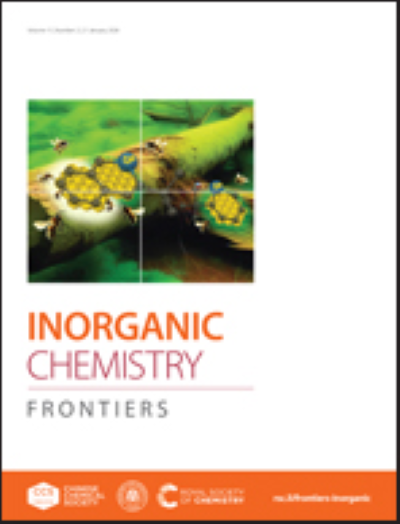高熵硫化纳米颗粒作为锂硫电池的氧化还原催化剂
IF 6.1
1区 化学
Q1 CHEMISTRY, INORGANIC & NUCLEAR
引用次数: 0
摘要
由于各种金属的协同效应和高熵效应,高熵硫化物(HES)具有较高的催化活性和结构稳定性。然而,传统的合成HES的方法通常需要提高温度来保证多种元素的均匀共混,这直接导致纳米颗粒团聚和电化学性能不理想。在此,我们提出HES作为锂硫电池的新型分离器改性剂,克服了传统单一金属硫化物有限的吸附-催化协同作用。通过简单的模板法合成了超细FeCoNiCrMnS纳米球(HES NSs),其中多金属协同作用可以同时抑制多硫化物穿梭并加速氧化还原动力学。超细HES纳米晶体可以暴露出足够数量的活性位点,这些活性位点可以作为有效的LiPSs屏障来抑制副反应,并作为额外的捕收剂来增强多硫氧化还原反应。因此,采用HES//PP隔膜的电池在1000次循环后表现出出色的循环稳定性(1.0℃下906.8 mAh g-1)。这项研究不仅展示了HES作为Li-S电池隔膜改性剂的潜在应用,而且为探索其他高熵材料提供了新的见解。本文章由计算机程序翻译,如有差异,请以英文原文为准。
High entropy sulfide nanoparticles as redox catalysts for lithium-sulfur batteries
High entropy sulfide (HES) exhibits high catalytic activity and structural stability due to the synergistic effect and high entropy effect of various metals. However, the conventional approach for synthesizing HES typically necessitates elevated temperatures to ensure homogeneous blending of multiple elements, which directly results in nanoparticle agglomeration and unsatisfactory electrochemical performance. Herein, we propose the HES as a novel separator modifier for lithium-sulfur batteries, which overcomes the limited adsorption-catalytic synergy of conventional single metal sulfides. Ultrafine FeCoNiCrMnS₂ nanospheres (HES NSs) are synthesized via a facile template method, where the multi-metal synergy enables simultaneous suppression of polysulfide shuttling and acceleration of redox kinetics. The ultrafine HES nanocrystals can expose a sufficient number of active sites, which serve as an efficient LiPSs barrier to inhibit side reactions and as an additional collector to enhance the polysulfide redox reaction. As a result, the battery employing HES//PP separators exhibits outstanding cycle stability (906.8 mAh g-1 at 1.0 C after 1000 cycles). This study not only showcases the potential application of HES as a separator modifier for Li-S batteries but also provides novel insights into exploring other high-entropy materials.
求助全文
通过发布文献求助,成功后即可免费获取论文全文。
去求助
来源期刊

Inorganic Chemistry Frontiers
CHEMISTRY, INORGANIC & NUCLEAR-
CiteScore
10.40
自引率
7.10%
发文量
587
审稿时长
1.2 months
期刊介绍:
The international, high quality journal for interdisciplinary research between inorganic chemistry and related subjects
 求助内容:
求助内容: 应助结果提醒方式:
应助结果提醒方式:


